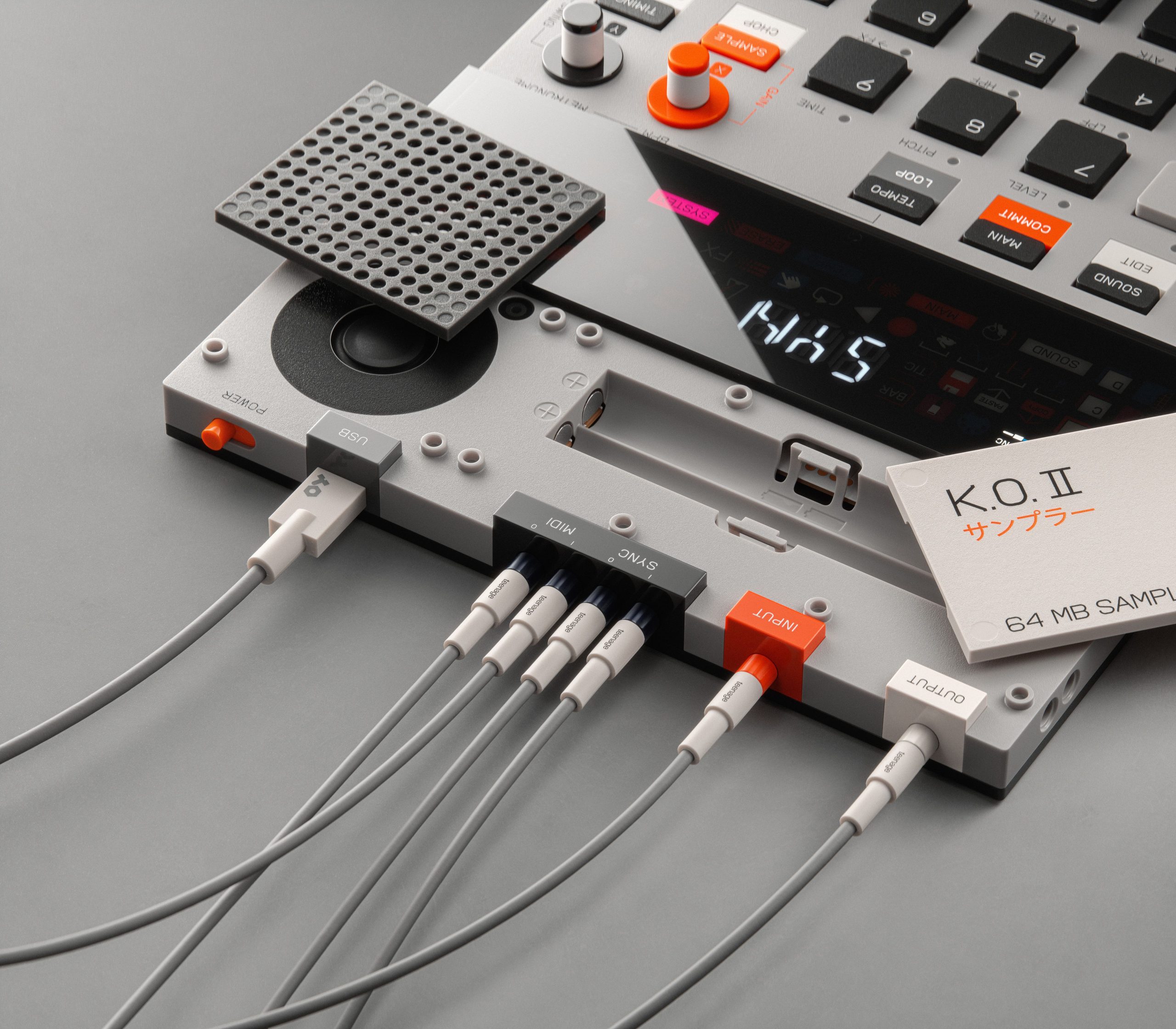Teenage Engineering seems to be following a consistent theme with its recent product releases, and that theme appears to revolve around the need for a substantial budget. The latest addition to the Swedish company’s exclusive music-making gear lineup is the EP-133 sampler. Referred to in full as the EP-133 K.O. II 64MB Sampler Composer, this product was teased on the company’s website with a vibrant countdown, leaving Teenage Engineering enthusiasts anxiously anticipating its release.
Upon the countdown reaching zero, the big reveal unfolded, showcasing the EP-133 sampler. The surprise factor was not just in its sleek and appealing design but also in its relatively reasonable price tag of $299. This juxtaposition of an attractive design and a more accessible price point likely made the EP-133 sampler a welcome addition for fans and potential buyers alike.
Fadergate
The countdown proved to be just the beginning of the EP-133 K.O. II’s journey into the hands of buyers. Remarkably, within a mere 24 hours after its revelation, units started reaching the eager hands of purchasers. In a matter of days, YouTube became flooded with first-look videos and tutorials, creating a rapid and widespread online presence for the newly released sampler.
However, not all was smooth sailing. A noteworthy concern emerged among users, with some reporting defective faders in their units. This issue gained enough traction within the community that it earned the moniker “fadergate.” A resourceful content creator even disassembled their unit and potentially identified the cause—internal pins that were bent and not establishing a connection. When queried about this problem, Teenage Engineering was contacted for clarification, and updates to this story will be provided once more information is available.
Some buyers speculated that the problem might be linked to the fact that the K.O. II ships without caps on its rotaries and faders, which are packed separately to allow for a flatter packaging. The fader cap, in particular, was noted for its unusually tight fit. This led to conjecture that the force required to push down the cap might be exerting excessive pressure on internal components, raising the unsettling prospect of users unintentionally damaging their devices before even having the chance to use them. Taking precautions, some users employed needle-nosed tweezers to support the fader as they applied its cap, aiming to avoid potential issues. As the situation develops, users remain cautious, hoping for a resolution to the reported problems.
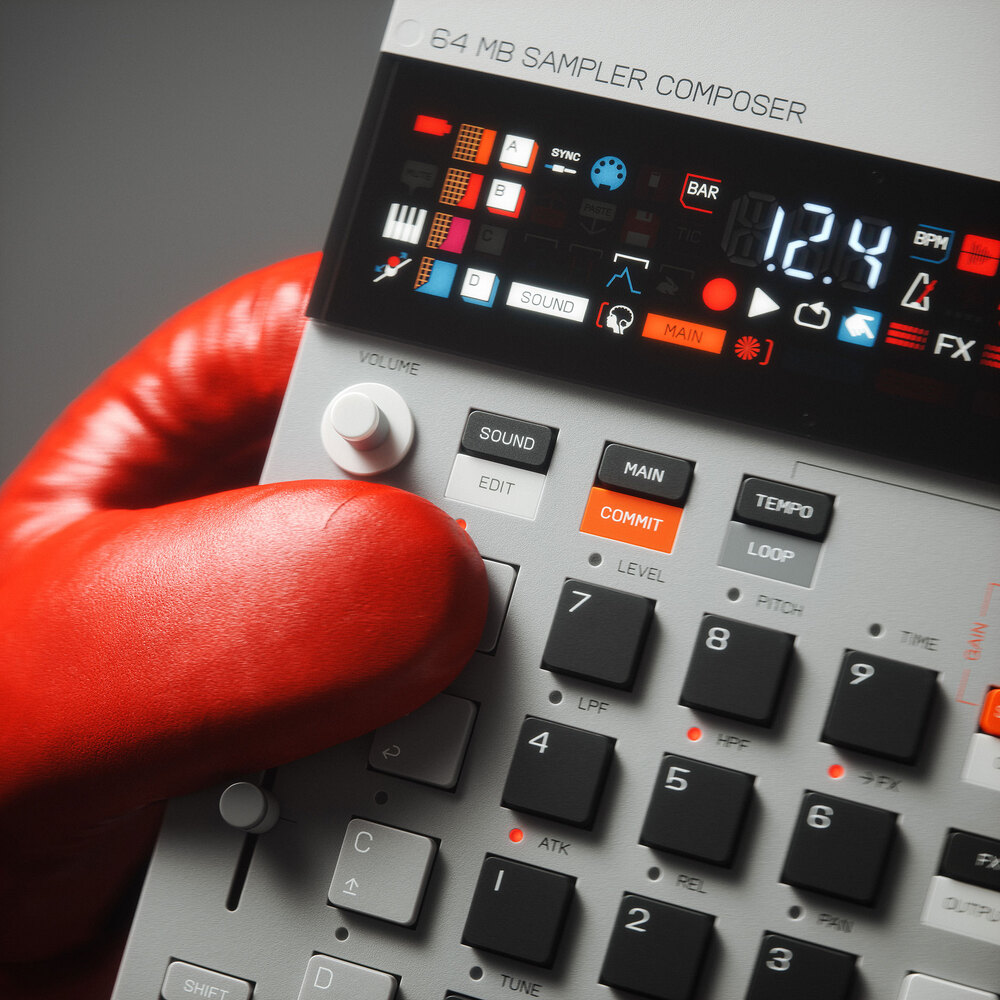
The nomenclature “K.O. II” suggests that Teenage Engineering positions this product as a follow-up to the original PO-33 K.O. While the K.O. II isn’t classified as a Pocket Operator, it does incorporate subtle design elements inspired by the retro desk calculator aesthetic characteristic of the Pocket Operator series. With a diagonal size of 12 inches, it enters the realm of iPad dimensions. Additionally, the K.O. II operates on AAA batteries (or USB power), aligning with the design ethos of the PO series. The battery life is contingent on the brand and type of batteries used, and while specific durations may vary, reports indicate that the device can run for an extended period. Users have reported successful usage with inexpensive rechargeable batteries for over a week, showcasing its practicality and versatility in different power scenarios.
Your personal perspective on the K.O. II aligns with a sentiment that it offers a more appealing form factor compared to the Pocket Operators. The K.O. II retains portability while exuding a slightly more “serious” aesthetic, which resonates with your preferences. The design, characterized by a retro desk calculator vibe, is a testament to Teenage Engineering’s skill in creating visually attractive products.
The model number, EP-133, hints at the possibility of additional instruments in the same line, sparking anticipation for potential future releases. The idea of seeing other instruments presented in the style of giant calculators adds an element of excitement and curiosity for what Teenage Engineering might have in store for the future. The combination of functionality, portability, and aesthetic appeal contributes to the overall appeal of the K.O. II and raises hopes for a diverse and creative lineup within the EP-133 series.
In use
Upon ensuring the fader is in order and the batteries are properly in place, the K.O. II comes to life, presenting a vibrant array of icons on its display. Notably, these icons are not pixel-based; rather, they constitute a “Super segment hybrid display” according to Teenage Engineering. This innovative display combines elements of a digital watch with an assortment of colorful and charming custom icons. These icons serve to indicate when specific modes or features are activated, reminiscent of the fixed icons seen on old Game & Watch handhelds. In this setup, icons are essentially switched on or off as required.
While some of the icons may be abstract, Teenage Engineering provides a guide on their website to decode their meanings. For instance, the red umbrella icon signifies the undo function. This integration of a visually engaging and intuitive display adds to the overall user experience, making it both functional and aesthetically pleasing.
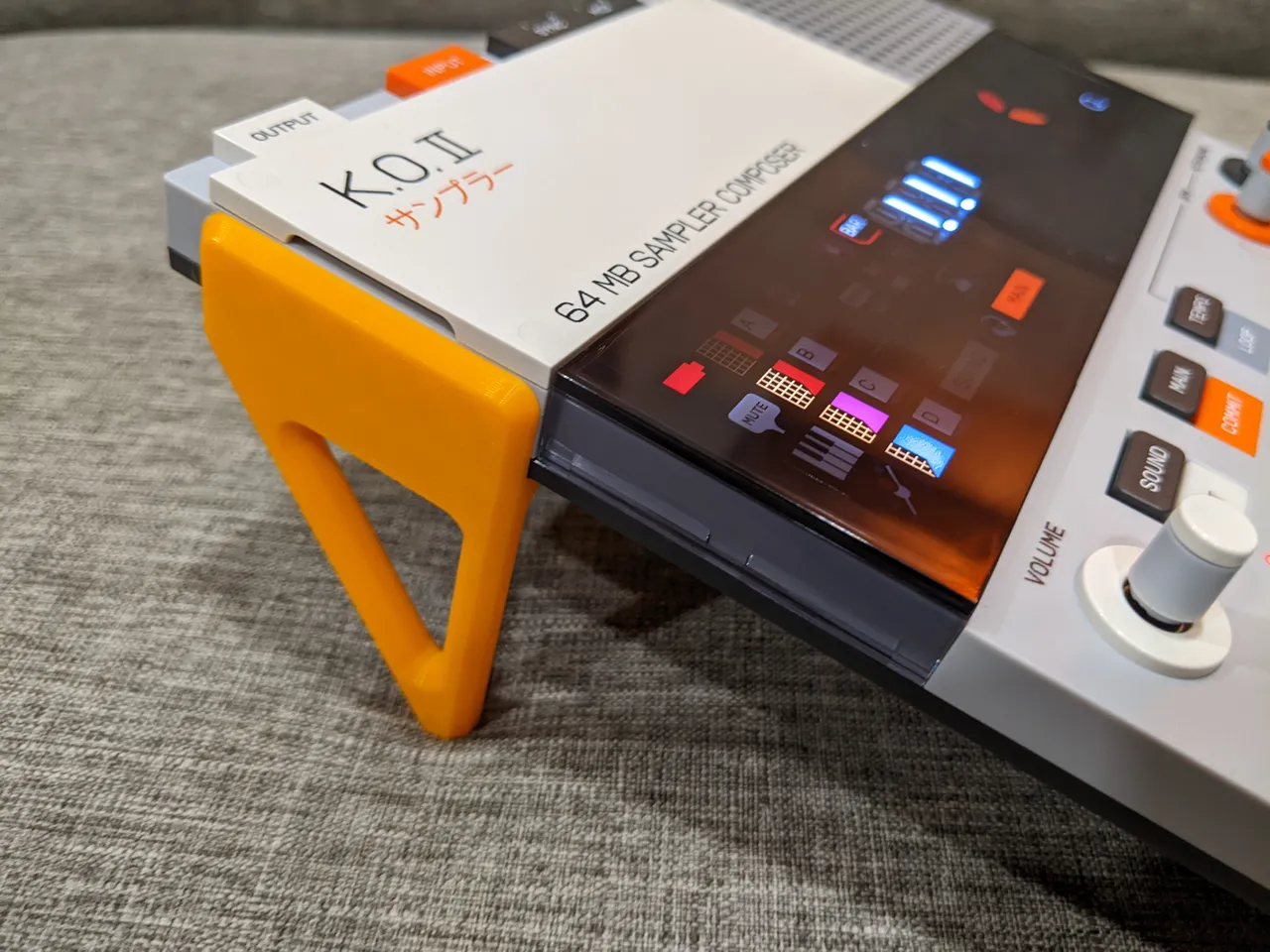
It’s always interesting to explore the usability of music gear without consulting the manual, and the K.O. II by Teenage Engineering pleasantly surprised you in this regard. Within minutes, you were able to decipher basic navigation, understand organizational structures such as sample groups, and grasp the functionality of shift functions and the fader.
The device’s buttons and faders, described more like keys than traditional rubber pads, provided a satisfying click and proved to be pressure-sensitive. This feature allows for nuanced control over drum hits, enabling users to vary velocities or play notes with different strengths. While the launch materials indicated that the K.O. II doesn’t feature rubber MPC-style pads, your experience highlighted the positive aspects of its unique design.
Although you managed to navigate the device without reading the manual, you acknowledge the importance of doing so, especially considering the visually appealing nature of the manual itself. Additionally, the tool for managing samples, accessible via desktop browsers and, to a limited extent, on Android phones, adds a layer of convenience for users.
The K.O. II’s workflow for capturing sounds appears to be straightforward. Whether sampling from a PC, phone, or other sound-producing devices through a 3.5mm cable, or using the built-in mic for on-the-fly recording, the device seems versatile in accommodating various sources. The surprising quality of the built-in mic makes it a viable option for capturing vocal phrases and other found sounds, provided you are in a quiet environment. Overall, the K.O. II’s design, functionality, and usability contribute to a positive user experience.
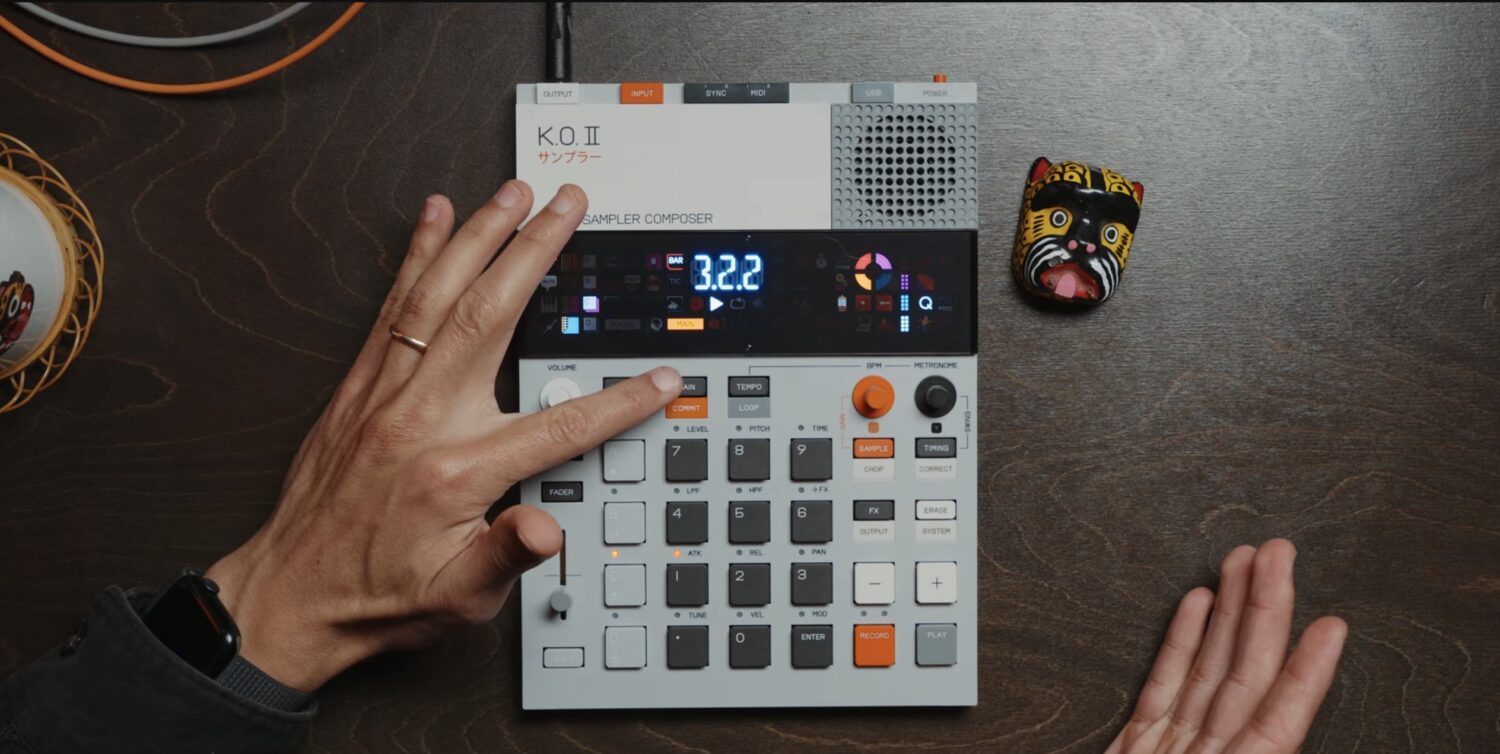
For those who might not have a collection of samples ready, the K.O. II comes pre-installed with a variety of quality sounds, including drums, bass pads, and lead sounds. This diverse selection allows users to dive into music-making right away. However, the option to incorporate your own samples is encouraged to personalize and enhance your projects. The device provides ample flexibility, allowing users to back up, delete, and free up slots for custom samples. Each slot can accommodate samples with a maximum length of 20 seconds, consistent with the OP-1 Field.
The 64MB of memory might seem modest, but it equates to approximately 11 minutes of samples at the 46kHz/16bit recording quality employed by the K.O. II. Keep in mind that sampling in stereo will halve this time. Generally, even with a generous approach to sampling, over five minutes of available space should be sufficient for most musical compositions. The potential bottleneck is more likely to be the 12-voice limit, meaning the K.O. II can play 12 sounds simultaneously. For users who employ multiple stereo samples at once, this limit can be reached. While this might not be a concern for all compositions, maximalists should take note.
One common technique to avoid reaching the voice limit on other devices is resampling, which involves merging separate sounds into a new sample. However, the K.O. II lacks this capability, and users have noted it as a significant limitation, particularly when it comes to incorporating effects and modulation. The absence of resampling becomes more apparent given the K.O. II’s restriction to one master effect at a time. Despite this concern, Teenage Engineering has a history of enhancing device functionality through firmware updates, offering hope that such limitations may be addressed in future updates.
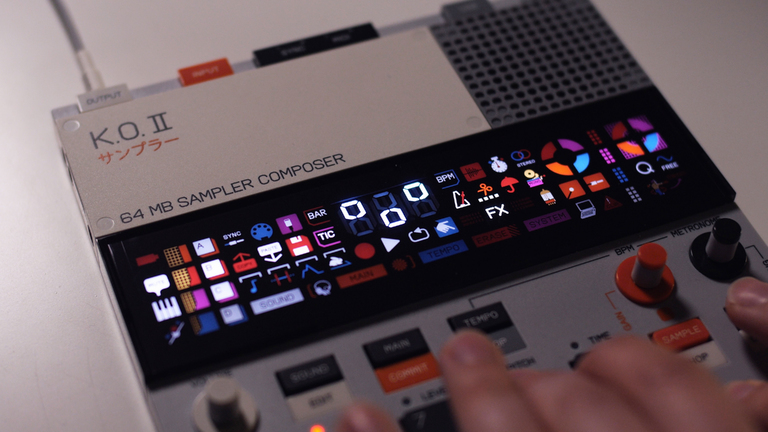
The K.O. II lacks a conventional song mode, and instead, it operates with four sample “groups” that can be seen as tracks (e.g., drums, bass, lead). Each group can house up to 99 patterns, and patterns can extend up to 99 bars in length. Users can save active patterns across the four groups as a “scene,” and these scenes can be triggered consecutively. However, there is no automated way for scenes to transition, requiring users to either utilize MIDI creatively or manually trigger scenes and patterns in real-time for song progression.
While the absence of an automated song mode may pose challenges for certain musical contexts, it also introduces a unique performative aspect. The K.O. II features 12 “punch-in” effects that can be applied by holding down the FX key and pressing any of the 12 black pads, each labeled with its corresponding effect name (e.g., Level, Pitch). The expressive nature of these punch-in effects is influenced by the pressure applied, contributing to a dynamic and nuanced experience. Notably, these effects also serve as modulation tools when used in conjunction with the fader. For example, pressing FX+7 applies the “Level” punch-in effect (rhythmic gating), while Fader+7 assigns gain/level to the fader until another modulator is selected, such as Attack or Low Pass Filter.
Discovering various functionalities of the K.O. II, such as soloing groups by pressing the FX button and the corresponding group, or applying punch-in effects to create real-time variations, often happens through experimentation. These touches, coupled with the device’s features, suggest that Teenage Engineering envisioned the K.O. II as a playful and performative instrument rather than a linear song-making machine. The emphasis on real-time control and expressive manipulation aligns with a more improvisational and spontaneous approach to music creation.
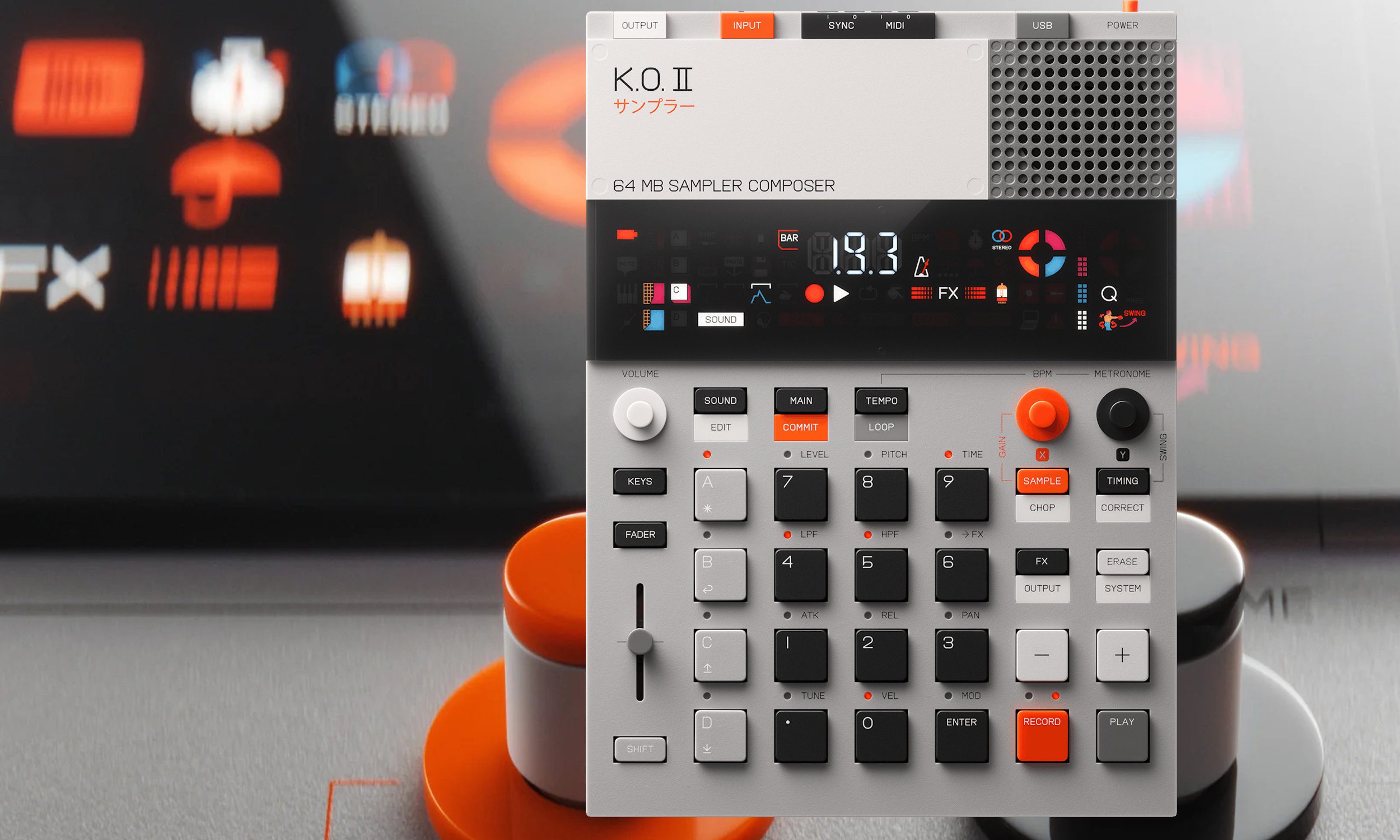
Teenage Engineering is known for incorporating a touch of “magic” into its products through small, cute, and often hidden features that add an extra layer of fun. Examples include FM radio on devices like the OP-1/Field and OB-4, and the video-making tool in the app for the OP-Z. The hope for potential interaction between the K.O. II and OB-4 arose briefly when “loop mode from OB-4” was spotted on the K.O. II’s product page. However, it turned out to describe the looping feature borrowed from the OB-4 rather than an interactive connection between the two devices.
As you conclude your thoughts, the second official firmware update (v1.1.1) has just been released for the K.O. II. While it may not include groundbreaking features like motion control or radio sampling, it highlights Teenage Engineering’s commitment to post-launch support and the addition of features over time. This aligns with the company’s track record of introducing significant updates, such as the vocoder synth for the OP-1 Field and the substantial 1.2.38 update for the OP-Z, months or even years after the initial product release.
The K.O. II, positioned as a more accessible sampler, offers a promising option for beginners or those inclined toward a performative style. While it may not match the depth and complexity of devices like Roland’s SP 404 or Native Instruments’ Maschine, it serves a unique niche in the market. Despite the fadergate issue, the K.O. II emerges as a promising product from Teenage Engineering, demonstrating the company’s ability to innovate and cater to its fan base even in the face of recent challenges.

